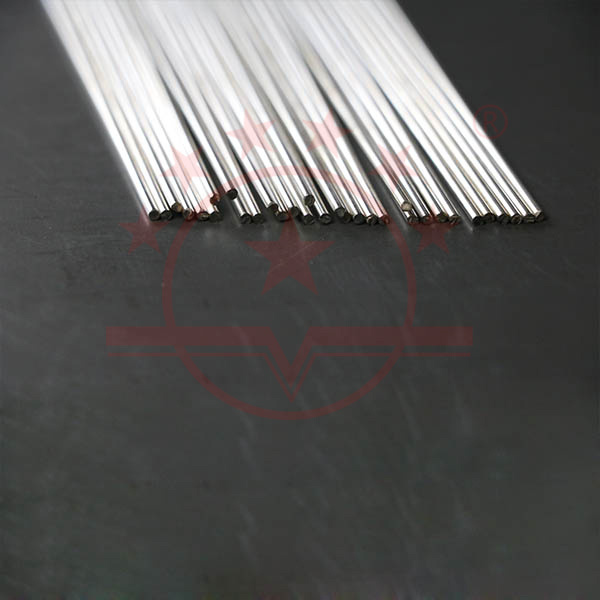1. Brazing process Graphite brazing methods can be divided into two types, one is brazing after surface metallization, and the other is brazing without surface treatment. Whichever method is used, the weldment should be pretreated before the weldment is assembled, and the surface of the graphite material should be wiped clean with alcohol or acetone. In surface metallization brazing, a layer of Ni, Cu should be plated on the graphite surface or a layer of Ti, Zr or molybdenum silicide should be sprayed on the graphite surface. Direct soldering with active solder is currently the most widely used method. The soldering temperature can be selected according to the solder provided in Table 16. The solder can be clamped in the middle or near one end of the solder joint. When used with brazed metals with a thermal expansion coefficient, a certain thickness of Mo or Ti can be used as the center
The buffer layer (transition layer) can undergo plastic deformation during brazing and heating, absorb thermal stress and avoid graphite cracking. For example, using Mo as a transition joint to vacuum braze graphite and corrosion-resistant nickel-based excess (HastelloyN) components, using B-Pd60Ni35Cr5 solder has good resistance to molten salt corrosion and radiation, and the brazing temperature is 1260 ℃ for 10 minutes. For natural diamonds, B-Ag68.8Cu16.7Ti4.5 and B-Ag66Cu26Ti8 can be directly used for brazing. Brazing should be performed under vacuum or low argon protection. Brazing temperature should not exceed 850 ° C. Choose a faster heating rate. The holding time at the brazing temperature should not be too long (usually about 10s) to avoid the formation of a continuous TiC layer at the interface. For diamond and brazed alloy steels, plastic interlayers or low-expansion alloy layers should be added for transitions to prevent excessive thermal stress from damaging the diamond grains. Use a brazing process to make turning or boring tools for ultra-precision machining. 20 to 100 mg diamond brazed small particles are made on the steel body, and the joint strength of the solder joint reaches 200 to 250 MPa. Polycrystalline diamonds can be flame brazed, high frequency brazed or vacuum brazed. Diamond circular saw blades for cutting metal or stone should be brazed with high frequency or flame. A lower melting Ag-Cu-Ti active solder should be used. The brazing temperature should be controlled below 850 ℃, and the heating time should not be suitable. Too long and slow down the cooling rate. Polycrystalline diamond bits for petroleum and geological drilling have harsh working conditions and can withstand huge impact loads. A nickel-based solder can be used, and a pure copper foil is used as an intermediate layer for vacuum soldering.
For example, 350 to 400 cylindrical polycrystalline diamonds having a diameter of 4.5 to 4.5 mm are brazed into the perforations of 35CrMo or 40CrNiMo steel to form cutting teeth. The vacuum degree is brazing, and the vacuum degree is not less than 5 × 10-2Pa. The brazing temperature is 1020 ± 5 ℃, and the holding time is 20 ± 2min.
The shear strength of brazed joints is greater than 200 MPa. When brazing, the weight of the weldment should be used for assembly positioning so that the metal parts are located on the upper part.
Extruded graphite or polycrystalline materials. When using a fixture for positioning, the material of the fixture should be similar to that of the welded part.
2. Brazing of aluminum-based composite materials
(1) Brazing properties Aluminum-based composite materials mainly include particle (including whisker) reinforcement and fiber reinforcement. Materials used for reinforcement are B, CB, SiC, etc. When the aluminum-based composite material is brazed and heated, a chemical reaction easily occurs between the matrix Al and the reinforcing phase, for example, Si diffuses quickly into the base material in the solder, resulting in a brittle pouring layer. It reduces material properties, and because the linear expansion coefficients between Al and the reinforcing phase are very different, improper brazing heating can cause thermal stress at the interface and easily lead to joint cracking. In addition, the wettability between the brazing material and the reinforcing phase is poor. The brazed surface of the composite must be treated or an active brazing material should be used. Wherever possible, vacuum brazing should be used.
(2) Aluminum-based composites reinforced with B or B or SiC particles can be welded. The surface treatment before welding can be sandpaper polishing, wire brush cleaning, alkaline washing or electroless nickel plating (plating thickness 0.05mm). The brazing materials are S-Cd95Ag, S-Zn95Al and S-Cd83Zn, which are heated by a soft acetylene flame. In addition, S-Zn95Al solder can be used for scrap soldering to obtain higher bonding strength. Short fiber reinforced 6061 aluminum-based composites can be joined by vacuum brazing. Before brazing, the surface should be ground and then ground with 800 grit sandpaper. After ultrasonic cleaning in acetone, it should be brazed in a furnace.
As the brazing material, Al-Si based brazing material is mainly used. In order to prevent Si from diffusing into the substrate, a pure aluminum foil barrier layer can be covered on the brazed surface of the composite material, or a B-Al64SiMgBi (11.65i-15Mg-0.5Bi) brazing filler with a lower brazing strength can be selected. The melting range of the solder is 554 ~ 572 ° C, the brazing temperature is 580 ~ 590 ° C, the brazing time is 5 minutes, and the joint shear strength is greater than 80 MPa. For aluminum particles reinforced with graphite particles, brazing in a protective atmosphere furnace is currently the most successful method. In order to improve the wettability, an Al-Si solder containing magnesium must be used. Like aluminum vacuum brazing, vacuum brazing of aluminum-based composites introduces Mg vapor or Ti getter, and adding a certain amount of Mg can significantly improve the solder wettability.
 Silver Brazing Alloy
Silver Brazing Alloy


















 sales@welding-material.com
sales@welding-material.com







